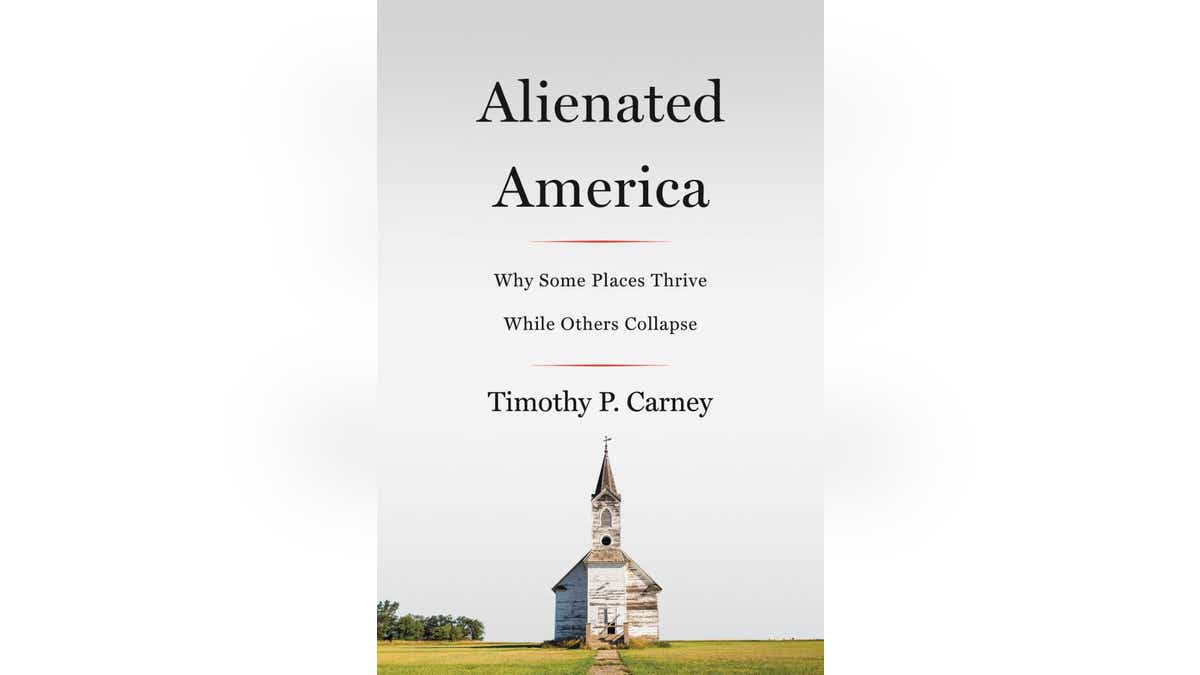
When Donald Trump declared the American Dream was dead, and that America needed to be made “great again,” a chorus of mockery and disapproval rained down from elite circles.
“America is already great,” President Barack Obama proclaimed to great applause at the 2016 Democratic National Convention. Those saying otherwise were either imagining their suffering or bore the blame for it, commentators would argue during and after the campaign.
“Economic anxiety didn’t make people vote for Trump, racism did,” an article at the liberal magazine The Nation stated. “Many of these people haven’t been left behind,” liberal journalist Sean Illing explained on Vox.com. “They’ve chosen not to keep up.”
GREEN NEW DEAL WOULD DESTROY AMERICAN DREAM, CREATE AMERICAN NIGHTMARE
Hiding behind these assertions is the unstated hope that this grousing, and these supposedly imaginary problems of blue-collar America, will disappear once Trump is out of office.
I spent much of the last few years travelling the country and studying the plight of the working class for my new book “Alienated America.” For any honest and informed observer, it’s impossible to deny that the suffering is real. And it’s not going away, even when Trump does.
Activists and academics have tried to disprove the idea that real suffering drove support fro Trump. But these critics were asking the wrong questions. The liberal writers at The Nation, for instance, concluded there was “little evidence to suggest individual economic distress benefited Trump.”
The key words here are “individual” and “economic.” That’s too narrow a lens. Economics isn’t life, and people don’t live their lives as isolated individuals.
If you zoom out, and look at people as they actually live – as members of a community, with social needs, not just material needs – you see why so many believed the American Dream was dead.
“Areas like this,” the clerk at Vargo’s newsstand in Fayette City, Pennsylvania told me, “there’s never going to be anything here.”
His friend, Andrew Duda Jr., piled on. “Just drive down through the river roads from here through Monessen – it’s all shut down.”
Monessen was home to the Pittsburgh-Wheeling steel plant where Andrew Duda Sr. and thousands of other men had worked making nails and other steel products for decades, until the plant’s death late last century.
Monessen was also where Donald Trump spoke when he came to Western Pennsylvania in 2016 to lament the loss of manufacturing jobs at the hands of globalists and elites who allowed cheaper European and Chinese steel to undercut Pittsburgh’s steelmakers.
Trump’s core supporters weren’t the ones overdosing on opioids, or even necessarily drawing on disability and unemployment. They were those people’s neighbors. Their communities were crumbling, and their neighbors’ lives and families were collapsing around them.
You don’t have to agree with Trump’s trade views, though, to see that these communities really are devastated. Even if some Trump supporters in Fayette County are doing ok, they’re living among social ruin, and no one is going to convince them the American Dream is alive and well.
Main Street in Fayette City is rotting. Homes are boarded up. Most stores are shuttered. Shattered windows greet you at the Fayette City community center, dismally advertised by a decaying wooden sign. Fayette City’s population has fallen for decades, from 2,000 down to 600.
Fayette City isn’t a city. It isn’t even a town. It’s a former town.
The three men in Vargo’s were backing Trump. The Dudas hoped Trump could bring some life back to the Mon Valley. The clerk was less hopeful. His support for Trump was a pure expression of dismay.
A bit down the road is Fayette County’s biggest city, Uniontown. This place thrived in the first half of the 20th century, powered by coal and steel. Half the population has disappeared since the 1950s, though. Walk the streets of Uniontown and you see not just faded glory, but deep collapse.
Locals told me heroin needles litter their kids’ bus stops.
Overdoses plague Fayette County, as they do much of rural America. Fayette County’s overdose death rate is 57 per 100,000. That’s 50 percent higher than the state average, which itself is twice the national average.
Study the other numbers, and it gets worse. Fewer than one in seven of Uniontown adults have finished college, while about one in six never finished high school. Only 41 percent of Uniontown’s population over 16 was working in 2016.
The breakdown of family is visible there. While half of American households are married-couple family households according to the census, that number is below 30 percent in Uniontown.
Although Barack Obama and John McCain had basically tied in Fayette County in 2008, Trump dominated there in 2016, beating Hillary Clinton by a 2-to-1 margin.
Across the country, if you look not at exit polls (which cover individuals), but instead at the places where Trump did best, they were the places with the most social decay.
Counties with more overdose deaths and suicides saw more Trump support. So did counties with more adults on disability, more subprime loans, lower earnings, worse physical health, and so on.
CLICK HERE TO GET THE FOX NEWS APP
Trump’s core supporters weren’t the ones overdosing on opioids, or even necessarily drawing on disability and unemployment. They were those people’s neighbors. Their communities were crumbling, and their neighbors’ lives and families were collapsing around them.
It’s no wonder they rallied behind the man who declared the American Dream was dead.




















